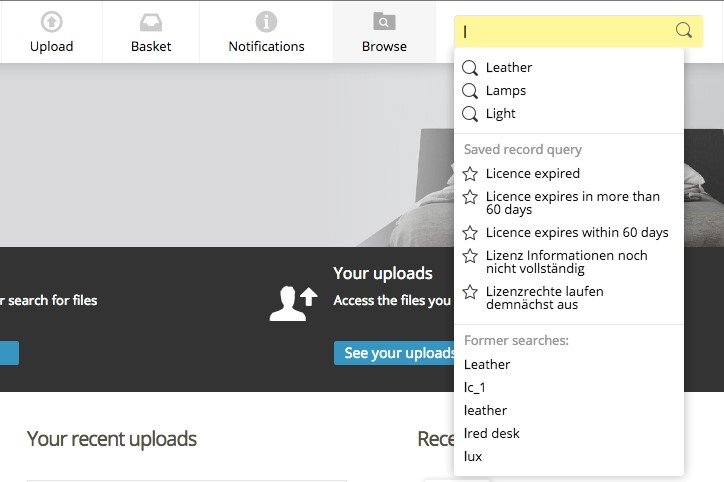
How to Prepare Your Content Before Migrating to a Digital Asset Management System: Part One
HOW TO PREPARE YOUR CONTENT BEFORE MIGRATING TO A DIGITAL ASSET MANAGEMENT SYSTEM: PART ONE
If you’re thinking about migrating to a digital asset management (DAM) system, you likely have one key goal: to centralize your content so that it’s more easily retrieved, edited, and shared. And DAM is the ideal solution for many organizations.
But before you migrate, it pays to do some preliminary work so that your content is ready to be transferred.
We’ll talk about how to do that in this 2-part series, but first, let’s address some basic issues.
What is a Digital Asset Management System?
You likely use a primitive form of DAM right now, even in your personal life.
For instance if you organize your files into folders, you are centralizing them in a way that makes sense to you.
That way, when you need to find a document, you have a hierarchy of file folders that you can sift through to retrieve the desired file.
A DAM works much the same way, but instead of the system making sense to only the creator, it works across an entire organization.
Its core competency is to centralize all digital assets, and then make it easy for employees, partners, or other authorized users to find, edit, use and share the content.
Some types of content stored on a DAM system are:
- Digital documents
- Images
- Videos
- Audio files
- PDFs
- Removable media on flash drives, CDs and DVDs
- Digitized analog media such as slides, prints, and negatives
What are the Benefits of DAM?
To make the best use of digital assets, they must be properly structured in order to increase organizational efficiency.
A DAM system does that in 4 main ways:
- By organizing documents into pre-defined classifications, millions of pages can be corralled into a system that makes sense to everyone who uses it.
- User governance. Not all content is meant to be public, and DAM can help restrict access to sensitive assets.
- Audits. It helps to know when a document was last updated, edited, or used and DAM systems keep detailed records.
- Through the use of unique metadata, which we cover in-depth in part 2 of this series, end users can easily retrieve the assets they need.

How to Find Your Existing Data
The first step in preparing your data is to locate all of the assets you currently own.
According to Kevin Gavin, CMO at Canto.com, it’s common for digital assets to be scattered across a lot of storage platforms like Google Drive, Dropbox, SharePoint, and other file storage systems.
“Our customers usually start with the content owners who already know where they are storing various assets and ask them to provide an inventory of digital assets to be centralized in the DAM,” he says.
Amy Chan, SR Product Marketing Manager at Extensis agrees that identifying the key stakeholders and asking them to deliver the assets that need to be cataloged is the best way to accomplish the task, but she doesn’t believe it needs to be done in one step.
“This can happen in multiple stages,” she says, “with the first focused on the primary assets the organization wants to include in the DAM.” She notes that with Portfolio, her company’s DAM solution, additional assets can be identified and added at a later time.
Some of the types of stakeholders that may own content in your organization are:
- Marketing team leaders
- Creative team leaders
- Visual and audio specialists
- Content creators
- Customers
- Distributors
- Vendors
- Customer service representatives
- Social media campaign managers
- Sales representatives
- IT department members
Deciding Which Content to Migrate and What to Leave Behind
Once you have an inventory of all the digital assets, it’s time to determine what you will migrate and which files you will delete or archive.
For example, some content will be outdated, no longer used, or duplicated.
Gavin says the best approach to deciding what should stay and what should go is: “If in doubt, centralize it in the DAM.” He says that the cost of storing the files is relatively small unless you’re storing high-resolution video files, so best practice is to centralize the storage of all digital assets in the DAM.
“Once they are centralized, then you can run reports and see which assets are being used and which ones are not. Those that are not being used are candidates for deletion or for transfer to archive storage.”
Chan has a different approach.
She suggests first defining the goals of the DAM, and then having all stakeholders agree to them.
“This can be based on the greatest challenges the organization is facing with their digital assets,” she says.
For example, if out-of-date or unapproved assets are being used, identifying those assets and archiving them should be the driving factor in deciding which content to migrate.
The Next Step: Adding Metadata
Now that you’ve located your content, organized it, and deleted any duplicates, it’s time to add metadata to it so end users will be able to find it easily.
This is a big topic so we’ll cover it in part two of this series.
Related Content
- 0 Comment
Subscribe to Newsletter
- How Can SharePoint Be Used To Organize and Disseminate SOPs?
- Planning the Perfect Genealogy Research Trip: A Step-by-Step Guide
- From Silly to Awesome: How Words Change Meaning Over Time
- The Psychology of Font Choice: How Typography Impacts Content Engagement
- How to Distribute SOPs for Maximum Usability




